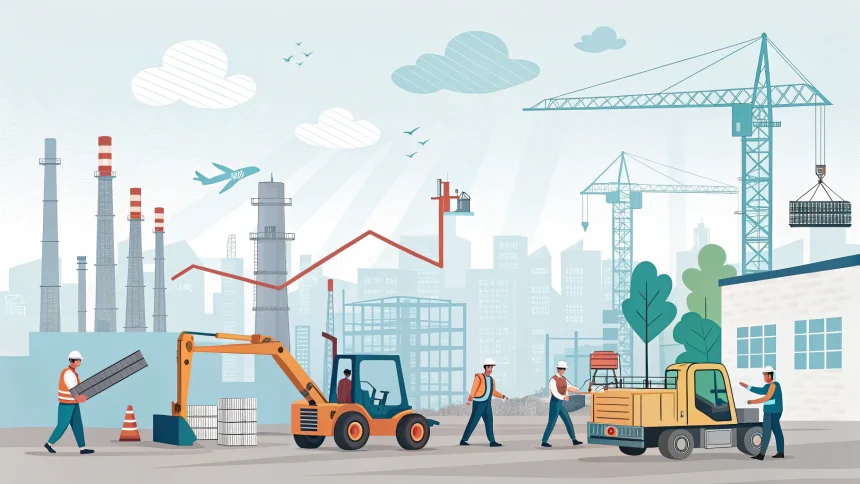India’s near-term growth story looks solid, but the jobs picture lags behind. That is the message from economist Arvind Panagariya, who points to infrastructure upgrades, tax changes, the Goods and Services Tax, and new labour codes as drivers of momentum. He argues that the next phase must focus on job creation and lighter rules to turn promise into sustained gains.
Panagariya, a former vice chairman of NITI Aayog, spoke as global demand cools and supply chains shift. He sees space for India to grow faster with the right mix of trade, labour, and regulatory reforms. The timing matters. The economy is expanding, yet many workers remain stuck in low-productivity roles.
What is fueling growth
Panagariya credits public works and tax reform for steady output. Major transport projects have reduced travel time and improved logistics. GST unified a patchwork of state taxes and widened the formal base. Corporate tax rates were cut in 2019 to attract investment, and incentives have aimed to boost manufacturing.
“India’s growth outlook is strong, backed by infrastructure gains, tax changes, GST reform and new labour codes,” he said.
Recent estimates from multilateral agencies project growth around the high-6 to 7 percent range in the near term. Private investment is rising in sectors like autos, electronics, and data centers. Public capital spending has stayed high, which supports roads, rail, and energy networks.
The jobs gap
Even as output rises, the quality of work trails. Many Indians are self-employed or in agriculture with low productivity. Panagariya’s central warning is blunt.
“Job creation remains the key hurdle, with most workers in low-productivity roles,” he said.
Economists say the formal sector has not absorbed enough young people each year. Women’s participation has improved from pandemic lows, but room for gains remains. Urban employment has grown in services, yet small firms still face high costs that limit hiring.
- Most new jobs need to come from labour-intensive manufacturing and modern services.
- Compliance costs for small and mid-size firms remain high in many states.
- Skills and mobility programs can help match workers to new plants and service hubs.
Reforms that could lift hiring
India consolidated dozens of labour laws into four codes, aimed at clearer rules for hiring, benefits, and safety. Panagariya and other experts say timely implementation can reduce uncertainty for employers and protect workers with simple, enforceable rules.
He also calls for lighter, more predictable regulation. Frequent inspections and complex paperwork raise costs for smaller factories. Streamlined permits, online filings, and faster dispute resolution would support expansion and new entrants.
He urged “deeper trade, labour and regulatory reforms to reach higher growth despite global uncertainty.”
Trade and the global opening
Panagariya backs wider trade ties to scale up exports. India has signed new trade agreements in recent years and is exploring more. The goal is to plug into supply chains for garments, toys, furniture, electronics, and auto components.
Lower tariffs on intermediate goods could reduce input costs. Logistics parks and ports can speed shipments. A stable exchange rate and export credit will help smaller firms move into new markets. With global growth mixed, winning share depends on price, quality, and reliability.
Balancing views and risks
Supporters of the current path argue that infrastructure and tax reforms are bearing fruit. They point to rising factory output and record services exports. Critics warn that the manufacturing share of jobs is still modest and that rural underemployment remains high.
Both sides agree that execution is the test. Clean data, faster court timelines, and steady policy signals will shape private investment. Training programs tied to local industry needs can raise productivity and wages.
What to watch next
Three signposts will indicate progress in the year ahead:
- Implementation of the four labour codes by more states.
- Growth in labour-intensive exports and the number of mid-size exporters.
- Formal job additions in monthly payroll data and surveys.
Panagariya’s view is clear. India has a strong base to build on, but the jobs engine must rev faster. The mix he proposes—open trade, practical labour rules, and simpler regulation—targets the bottlenecks firms face. If that agenda advances, growth could broaden and last longer. If it stalls, output may rise without enough quality work. The next policy moves will show which path wins.







